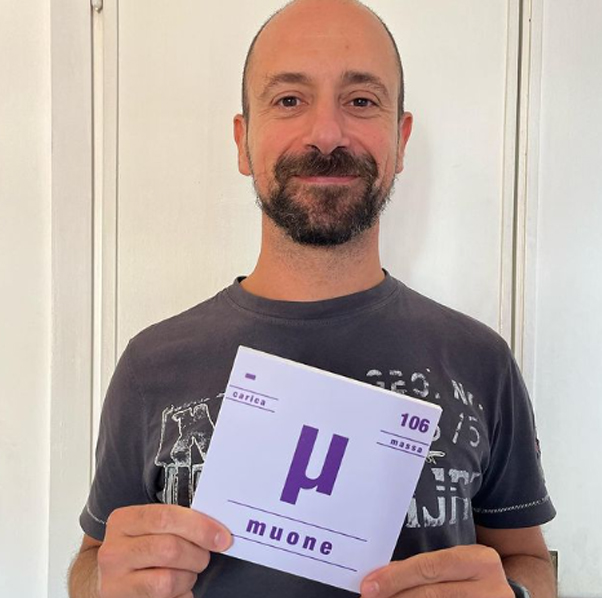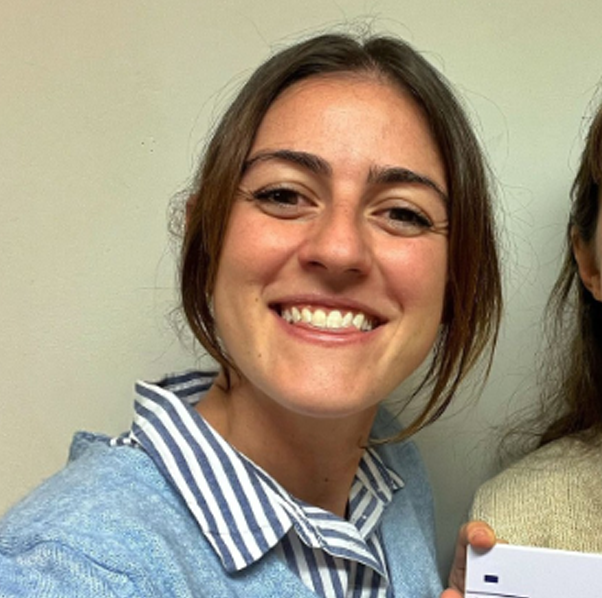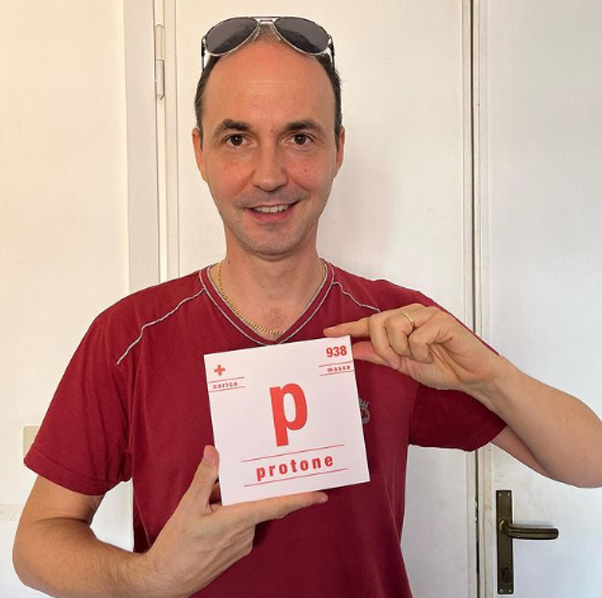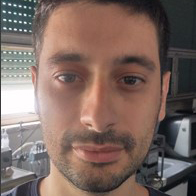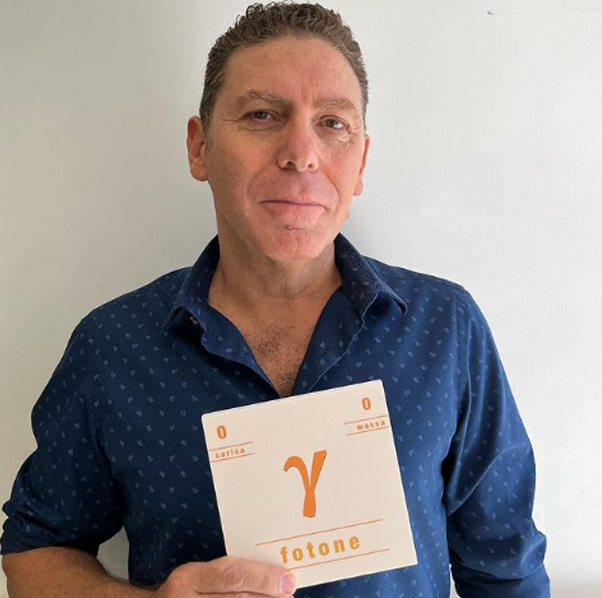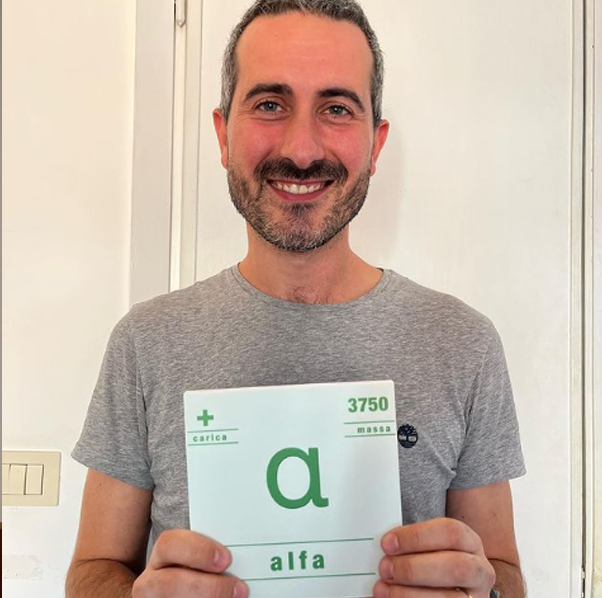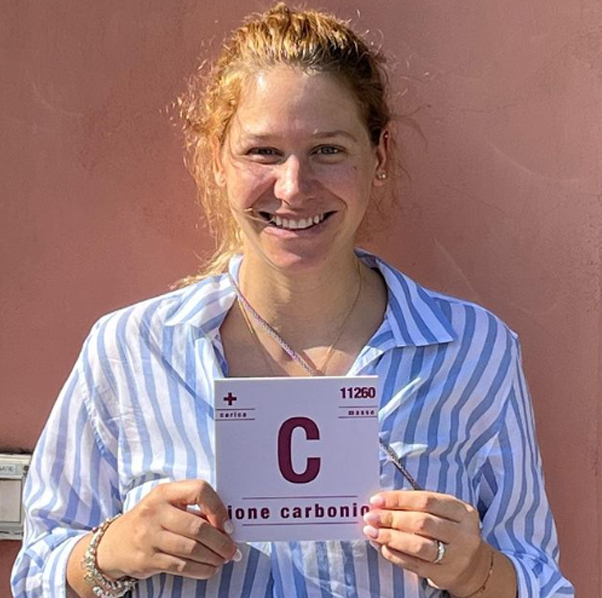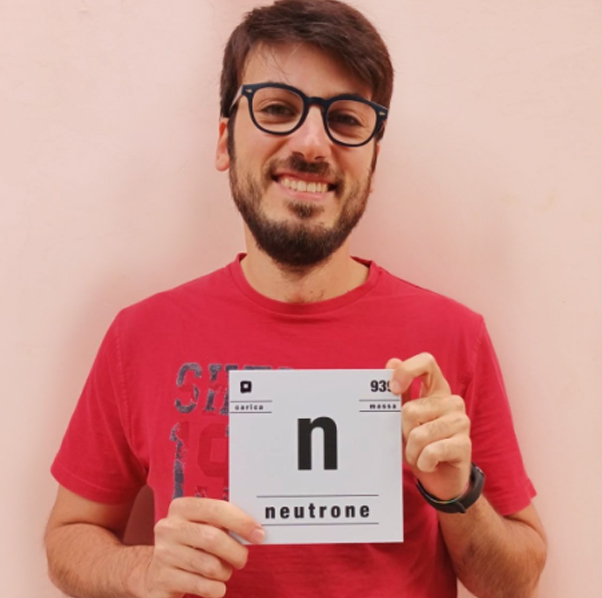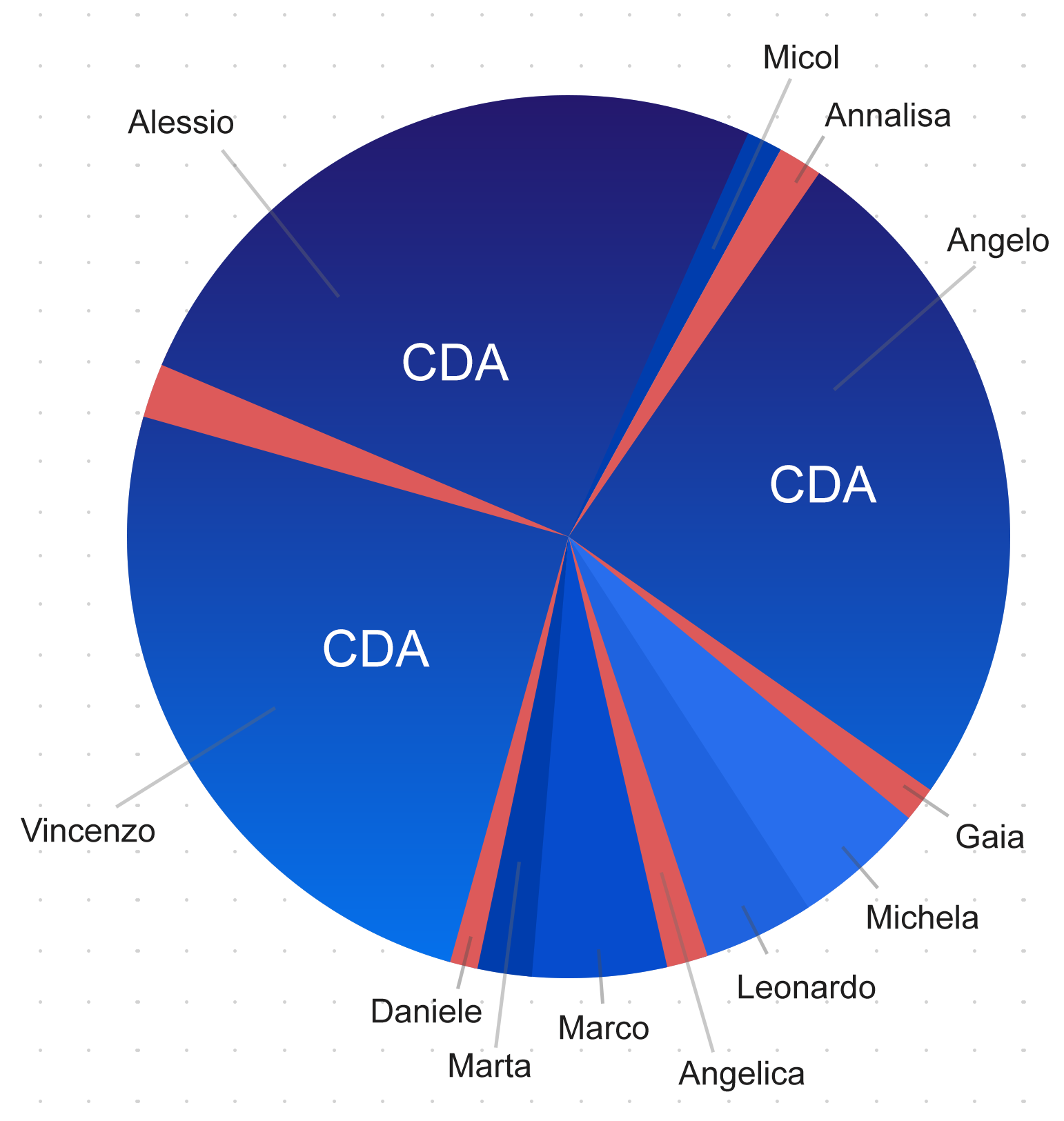
Mission
DARTS srl operates by commercially valorising the research activity of its founding members relating to the study, understanding and modeling of the interaction between radiation (in particular ionizing radiation) and matter.
This activity has allowed the development of algorithms and software capable of providing tools for rapid dose calculations to be offered to the industrial sector of radiotherapy machinery manufacturers and clinical treatment centers.
The complementary scientific and professional skills and the experience gained in the design of detectors also offer the possibility for DARTS srl members to be able to support multinational companies operating in the external beam radiotherapy sector and beyond (e.g.IBA, and SIT – Sordina IORT Technologies) and oncology treatment centers (e.g. Provincial Health Services Companies, Centro Nazionale di Adroterapia Oncologica, MAASTRO Clinic – Maastricht, Netherlands), which are already part of the DARTS network, in providing leading-edge technological solutions to the challenges posed today, for example, by external beam radiotherapy
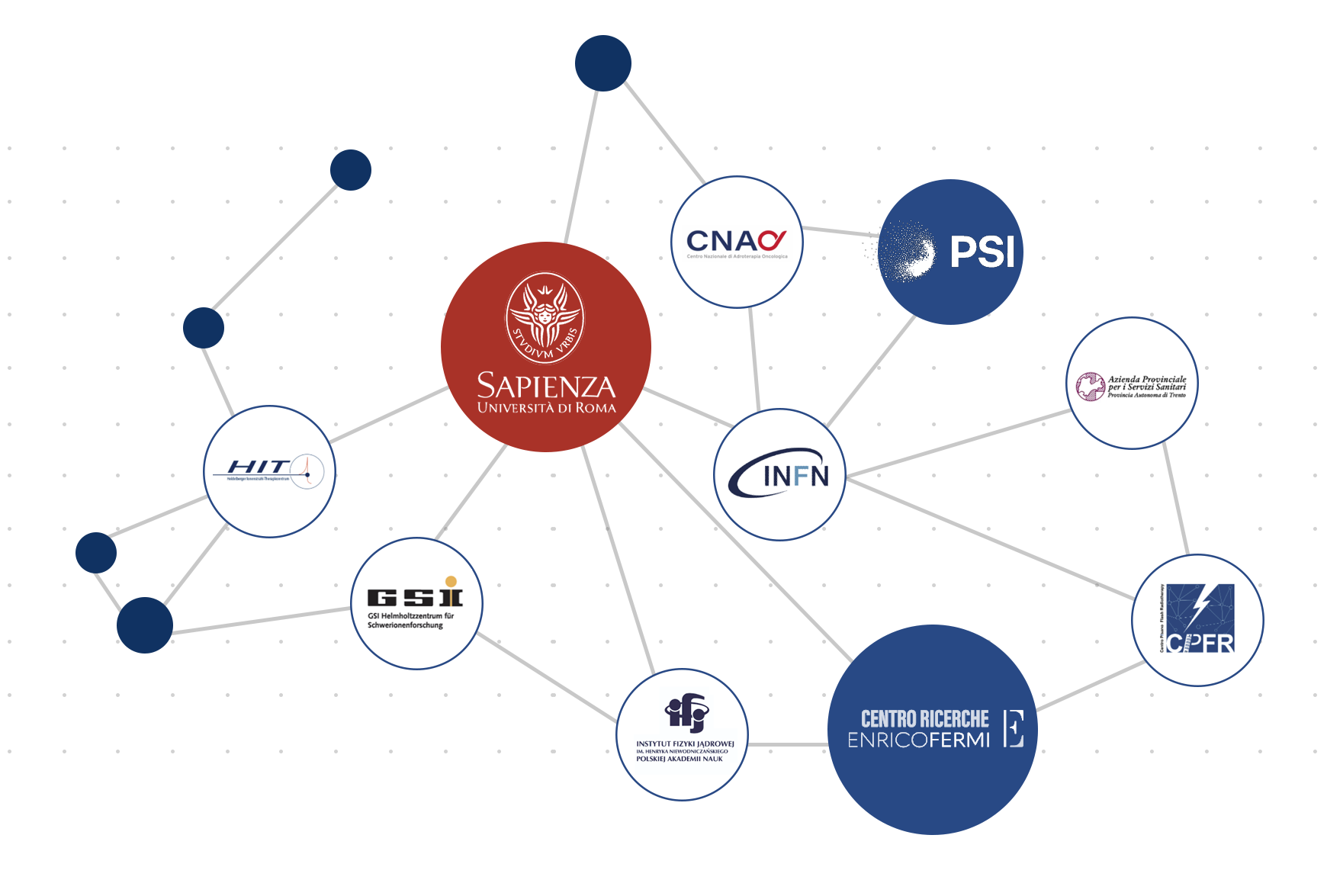
The Network
In this context, the DARTS members have built a network based on the “La Sapienza” University of Rome and the Centro Fermi and involving colleagues and laboratories located in the GSI (Darmstadt, Germania), in the Centro di Terapia HIT (Heidelberg, Germania), of the CNAO Centro Nazionale di Adroterapia Oncologica (Pavia, Italia), of the Centro di Protonterapia IFJ PAN (Cracovia, Polonia), of the Centro Pisano per la Radioterapia FLASH and of the Centro di Protonterapia APSS (Trento, Italia). The group has close collaborations with the INFN.
Know-how
The know-how acquired by the proponents and by the research group on radiation-matter interactions has to date resulted in the development of various software tools and hardware solutions to be supplied to research and treatment centers for:
- The precise and ultra-fast calculation of the dose due to the interaction of particle beams in medical or industrial use in order to carry out therapeutic planning or obtain dosimetric certification of radiotherapy treatments with external beams;
- Carry out precise radiation protection calculations;
- Calculations of particle flows dispersed by IORT (IntraOperative Radiation Therapy) and VHEE (Very High Energy Electrons) machines;
- Monitor the radiation produced in radiotherapy treatments with external beams.
The Team
The DARTS team brings together different professional figures, physicists and engineers (mainly biomedical), capable of combining software, hardware and commercial management skills.
Vincenzo Patera, Angelo Schiavi and Alessio Sarti, respectively Ordinary and Associate professors, together with a team of professors, researchers, physics graduates and PhDs, share vast expertise in particle physics and medical physics. The members of DARTS, in various capacities and with different skills, have collaborated in the ARPG group and are members of research projects of national and European importance.
Alessio Sarti
Associate Professor of Physics at the “Basic and Applied Sciences for Engineering” Department of the University of Rome “Sapienza”.
Read more
Member of the Applied Radiation Physics Group of Rome since 2011. Since early 2018 Associated Professor in “Università di Roma – Sapienza”.
The main research activities, started in 2010 as a researcher of “Sapienza” with a research assignment from INFN, are related to the application of High Energy Physics Techniques to Particle Therapy, to study both the interaction of the beam particles with the patient, and the related fragmentation of the target and projectile particles, to exploit new ways to deploy an ‘on-line’ monitor of PT treatments and to address the challenge posed by recent FLASH therapy observation. The beam fragmentation studies have been performed within the FIRST (2009 – 2016) and FOOT (ongoing) collaborations and are dedicated to the carbon and proton beam induced fragmentation. As a parallel activity, since 2011 and within the INSIDE and RDH collaborations, the study of the production of secondary particles in the beam interactions with different targets have been carried out. Since 2019 started an activity related also to the planning of particle therapy treatments using electron beams both in the field of deep seated tumors and IOeRT applications. Finally, starting from 2021, A. Sarti has been appointed as PI of the INFN – FRIDA project (a CSN5 call funded with ~ 1M€ budget and 100 participants from all over Italy and international network). Since Nov 2023 is vice-director of the Scuola di Specializzazione in Fisica Medica of the Sapienza Università di Roma
Bibliometric Indicators:
# Publications: 816; # Citations 37000; H index 86; H Index (5 y) 38
Angelica De Gregorio
I graduated in astro and astroparticle Physics at Università Sapienza in Rome, in 2019.
Read more
My research focuses primarily on radiation interactions, with a special emphasis on developing tools for medical applications. For my Master’s thesis, I joined the Applied Radiation Physics Group (ARPG) at the University of Rome Sapienza, collaborating with members from various departments and research centers. My work primarily revolved around the FOOT (FragmentatiOn Of Target) experiment, aimed at measuring nuclear cross-sections to enhance biologically oriented Treatment Planning Systems (TPS) for proton and heavy ion therapy. My contribution involved analyzing data from the 2019 experiments at GSI (Darmstadt, Germany), where a 16O beam at 400 MeV/u was directed at a C target, leading to the preliminary measurement of cross-sections using the FOOT apparatus. Additionally, I participated in the FLASH-DC project, contributing to the development of a monitor for FLASH radiotherapy (RT) capable of monitoring dose and pulse position with high precision. Currently, as a Ph.D. student, my research centers on optimizing TPS using Very High Energy Electrons (VHEE). This involves developing a system that combines Monte Carlo simulations with modeling the FLASH effect to create dose maps for optimization algorithms. Furthermore, I’ve been involved in the SAFEST collaboration, dedicated to constructing a research facility with a LINAC capable of delivering high-energy electron beams at ultra-high dose rates in the FLASH regime. My role in this collaboration includes evaluating dispersed flow through Monte Carlo simulations using FLUKA software, crucial for designing the facility’s shielding.
Angelo Schiavi
I am a physics professor who has been teaching at Sapienza since 2002. I teach basic and modern physics courses (relativistic, quantum, and nuclear) for the engineering faculty.
Read more
I graduated from Padua in 1997 with a thesis in theoretical quantum field physics. Then, I specialized at Imperial College London with an experimental doctorate on high-intensity laser-plasma interaction and particle acceleration. I have participated in and led experimental campaigns at major European laboratories (VULKAN, LOA, PALS) studying laser-plasma interaction. Over the years, I have been involved in studies related to Inertial Confinement Fusion (ICF) based on Fast Ignition and Shock Ignition techniques; production and propagation of shock waves in preformed plasmas; generation of ion beams through laser pulses; numerical simulation of beam instabilities in accelerator machines; numerical study of free-electron lasers in classical and quantum regimes (QFEL); and optimization through Monte Carlo simulations of ion beam treatment plans in hadron therapy.
Annalisa Muscato
I graduated in Biosystems Physics from Sapienza University of Rome in 2021.
Read more
My research primarily focused on investigating the interactions between radiation and matter, with a particular emphasis on the medical domain. Specifically, for my master’s thesis, I had the opportunity to collaborate with the Applied Radiation Physics Group (ARPG) at the same university. My work revolved around developing and analyzing radiotherapeutic treatment plans using Very High Energy Electrons (VHEE) for the treatment of deep-seated tumors, initially concentrating on prostate and head-neck tumors.
Currently, I am enrolled in the post-graduate specialization program in Medical Physics, also at Sapienza University of Rome. Within this program, I have the privilege of regularly attending various departments of the Policlinico Umberto I in Rome, including the radiotherapy department. In addition to my formalizing internship, I have chosen to extend my research endeavors within the ARPG group, where I am currently engaged in refining treatment plans utilizing VHEE, both in conventional and FLASH mode.
Over the past few years, I have had the opportunity to collaborate with several radiotherapy centers, such as the Campus Biomedico of Rome, the Radiotherapy Department of the Policlinico Umberto I in Rome, and the Centro di Protonterapia in Trento. Through these collaborations, I have studied cases treated with advanced techniques like IMRT and VMAT, employing conventional radiotherapy. This experience has enabled me to develop and optimize treatment plans with VHEE, utilizing Monte Carlo software such as FLUKA and FRED, with and without the FLASH effect, to assess their efficacy and compare them with state-of-the-art radiotherapy techniques.
Daniele Rocco
Technologist at the “Basic and Applied Sciences for Engineering” Department of the University of Rome “La Sapienza”.
Read more
Daniele Rocco obtained his Master Degree in Chemistry at the University of Rome “Sapienza” (Italy) in 2017. In the same University, he started his doctorate program at the Department of “Ingegneria Astronautica, Elettrica ed Energetica” which ended in February 2021. His research activity is focused on the design, synthesis and characterization of new molecules in the field of Organic Electronics, organic scintillators and on the organic electrosynthesis. During 2019 for three months he has been visiting PhD student at the Southampton University, where he worked on Flow Electrochemistry under the supervision of the professor R. C. D. Brown. Since 2023 he is involved in iEntrance project as technologist, focusing the research activity on Scanning Probe Microscopy SPMs, Raman Spectroscopy and correlative AFM in SEM microscopy.
Gaia Franciosini
In October 2022, I completed my Ph.D. in Accelerator Physics as a member of the Applied Radiation Physics group (ARPG) at Sapienza University of Rome.
Read more
Since then, I continues my Post-Doc research activity within the same group.
My interest, so far, were mainly related to the particle physics techniques applied to the radiotherapy field. I started my journey in the landscape of radiotherapy for my Master degree in Physics in 2018, joining the FOOT collaboration, which is focused on fragmentation studies that are relevant both for Particle Therapy with protons and carbon ions and Radio Protection in Space applications. My experience in the different projectiles used for External Beam RadioTherapy (EBRT) has greatly increased when I started, during my PhD studies, to work also on the FLASH radiotherapy field. My contribution was initially related to the planning of Intra-Operative electron RadioTherapy (IOeRT) treatments using electrons of low energy, but then I also started contributing to the development of a new EBRT technique involving electrons of very high energies (above 50 MeV). The study of such scenarios (both IOeRT and VHEE plans in conventional and FLASH irradiation modalities) started facing a difficult task: the development of a fast Monte Carlo software tool capable of exploring different irradiation configurations, energies, intensities to allow a real MC-based optimisation of the treatment. My efforts were focused on the FRED (Fast paRticle thErapy Dose evaluator) electromagnetic model development. I helped bringing FRED, a fast MC GPU-accelerated dose engine, to the level in which protons photons and electron plans can be simulated within minutes instead of days. With this tool, and with the help of the ARPG group, the FRED collaborators, the S.I.T. Sordina IORT Technologies S.p.A. company (Aprilia, Italy), I was able to successfully implement the first-ever complete Treatment Planning System (TPS) for Intra-Operative electron RadioTherapy (IOeRT). Such tool, long awaited, has the potential to significantly improve the IOeRT technique, overcoming its current main limitations (e.g. the relatively high probability of tumor local recurrence caused by the lack of a real planning tool). The tool will also pave the way for the most probable first clinical translation of the FLASH effect.
Leonardo Mattiello
Associate Professor of Chemistry at the “Basic and Applied Sciences for Engineering” Department of the University of Rome “Sapienza”.
Read more
Coordinator of LEOS-MS Laboratory of Electrochemistry, Organic Synthesis & Mass Spectrometry.
His expertise lies in chemical and electrochemical syntheses, characterization and electrochemical studies of new organic compounds and nanocomposite materials with applications in several fields: OLED, photovoltaics, plastic scintillators, fiber optics, sensors, drug delivery, protection of cultural heritage.
The scientific activity is documented by almost one hundred publications (articles in international peer-reviewed journals and conference proceedings), five national patents and thirty international patents.
Publications in a nuts:
- Scarano et al. Solar Energy 265, 112143 (2023). https://doi.org/10.1016/j.solener.2023.112143.
- Mattiello et al. Organic Scintillator. Patent WO2023156957A1 2023.
Scopus Author’s ID 7003730716
https://orcid.org/0000-0002-9517-0226
Marco Toppi
Marco Toppi is a researcher in the field of particle and nuclear physics, at the SBAI department of the University of Rome Sapienza.
Read more
He graduated in physics within the Tor Vergata ATLAS group, working on the development of a new generation of RPCs gas detector for heavy irradiation environments applications.
The bulk of his research activity, since the PhD, was focused on the study of the nuclear fragmentation process for application in the field of Particle Therapy and Space Radiation Protection and in the development of new detectors for Particle Therapy. To this purpose he joined the FIRST (Fragmentation of Ions Relevant for Space and Therapy) and the FOOT (FragmentatiOn Of Target) international collaborations where he took care of the measurement of nuclear fragmentation cross sections of interest for TPS improvement in Particle Therapy.
From 2016 he joined the ALICE collaboration working on the upgrade of the ALICE Inner Tracking System (ITS) for the Run 3 of the LHC. He took care of the measurement of the transverse momentum spectra of light-flavour particles, to study the Quark-Gluon Plasma generated in the collision between high energy nuclei.
Marta Fischetti
Marta Fischetti graduated with honors in biomedical engineering in 2017, she contributed to the development of a prototype probe used in an innovative radio-guided surgery technique using beta-minus emitters.
Read more
During her Ph.D. in Mathematical Models for Engineering, Electromagnetics, and Nanoscience completed in 2021 she studied and demonstrated the potential of an innovative monitoring technique for spotting morphological changes occurring in the patient during a carbon ions treatment. The research was conducted first through Monte Carlo studies that allowed her to validate the technique and then in vivo.
After completing her Ph.D., she continued her research with a PostDoc until July 2023, contributing to the improvement of the studies carried out during her Ph.D. and continuing to work with particle detectors.
Today she is a delegate – director of a scientific-technical company.
Michela Marafini
I graduated in Nuclear and Sub-Nuclear Physics from the Università Roma Tre in 2008 and obtained my Ph.D. at APC, Paris 7 University, in 2011 with a thesis on neutrino physics.
Read more
Throughout my research career, I have been dedicated to applied particle physics techniques, i.e in the development of innovative detectors and their diverse applications in both fundamental and applied research. Working in an international R&D environment, I have tackled hardware and software challenges, continuously enhancing my skills through collaboration with various experimental groups across different countries.
Since 2011, I have been based in Rome,, where my focus shifted towards the Radio and Particle Therapy field. Here, I have had the opportunity to explore novel detectors while taking on increasing responsibilities. Over time, I have gained independence in leading projects, coordinating teams, and conducting R&D studies with growing independence. Since the end of 2018 I am a permanent researcher at CREF; my primary areas of focus include beam monitoring in Flash Radiotherapy (FlashDC project) and nuclear imaging (reSPECT project). While my passion for detecting neutral particles remains steadfast, I am actively involved in projects such as MONDO and MULTIPASS, which aim to develop multipurpose detectors dedicated to the characterization and tracking of secondary neutrons and prompt photons produced in Particle Therapy.
Micol De Simoni
I decided to study physics because I was curious about how the world around me worked. During my studies, I realized that the part I was most passionate about was applied physics, which allowed me to quickly see the fruits of my work.
Read more
I fell in love with medical physics that reflected my commitment as an AIRC (Associazione Italiana per la Ricerca sul Cancro) volunteer. In these years of research I have been able to develop both hardware and software skills. Among the projects in which I have made major contributions there are: the development and early clinical trials of a detector for the improvement of Hadrontherapy and the development of a model of carbon fragmentation within a Monte Carlo running on GPU, FRED. Thanks to these experiences I found myself managing both data analysis and simulations using different programming languages (C/C++, python, fortran). In these years I found myself working both individually and in teams, often within international collaborations, including working for a year at the Ludwig Maximilian University of Munich. Now I am a researcher at the Italian National Institute of Health in the National Center of radiation protection and computational physics. While dedicated my passion for research, I also developed my passion for sports, getting to be in the top class of regional referees of futsal, playing volleyball, rock climbing and above all running a marathon.
Riccardo Mirabelli
Researcher at the “Basic and Applied Sciences for Engineering” Department of the
University of Rome “La Sapienza”.
Read more
During his Master’s thesis in 2016 in particle physics and his P.h.D. in Accelerator Physics
in 2020, Riccardo focused on characterising on a prototype for the MONDO project
(development of a tracking detector designed for the precise measurement of fast and
ultra-fast secondary neutrons, particularly for medical applications). Now, he is
passionately involved in the development of an innovative Wearable Individual Dose
Monitoring Apparatus (WIDMApp) for monitoring radiation doses in Molecular
Radiotherapy.
Publications in a nuts:
R.Mirabelli et al. Physica Medica, 2023, 108, 102545 doi: 10.1016/j.ejmp.2023.102545
M.Marafini et al. Physics in Medicine and Biology, 2017, 62(8), pp. 3299–3312 doi:
10.1088/1361-6560/aa623a
Scopus Author’s ID 57193833539
Vincenzo Patera
Full Professor of the “Basic and Applied Sciences for Engineering” Department of the
University of Rome “La Sapienza”.
Read more
His journey began with the international KLOE collaboration, focused on discrete
symmetries and the unitarity test of the quark mixing matrix (CKM). This research,
conducted at the DAPHNE electron-positron collider of the Frascati National Laboratory
of INFN, culminated in 2006. His contributions included designing the charged particle
trigger system and developing simulation and reconstruction software for the drift
chamber. In 2009 he promoted the birth of the Applied Radiation Physics Group (ARPG)
at “La Sapienza” University of Rome, acting since then as coordinator. His expertise
shines in its utilisation for treatment planning systems in particle therapy, a collaborative
effort with INFN-CERN FLUKA (where he is a code author and FLUKA collaboration
member) and within the INFN-TPS collaboration, which birthed a commercial Treatment
Planning System for carbon ions and protons.
Publications in a nuts:
M.Fischetti et al. Scientific Reports 10, 1, 20735 (2020) doi: 10.1038/s41598-020-77843-z
D.Rocco et al. NIM a 1052, 168277 (2023) doi: 10.1016/j.nima.2023.168277
Scopus Author’s ID 7004947754
Head Office
Via A. Scarpa 16, c/o Dipartimento di Scienze di Base e Applicate per l’Ingegneria, 00161 Roma RM
Administrative seat
Via Giovanni Paisiello 15 Cap 00198 C/O Sarti Stoduto e associati Roma RM
Please, contact us by filling the form below
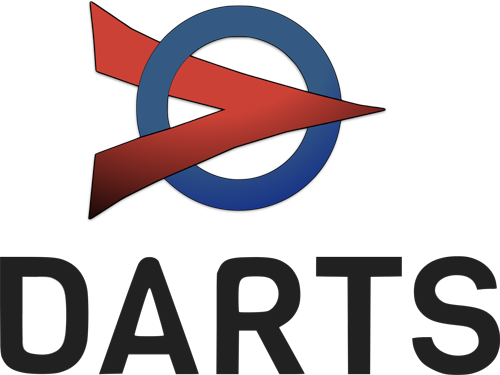
All rights reserved - dartsroma.com @2023 - Read our privacy policy and cookie policy

